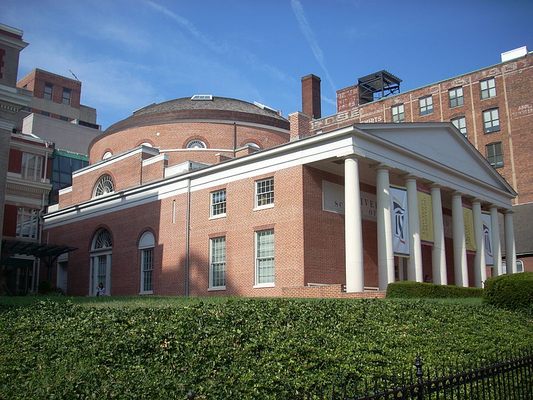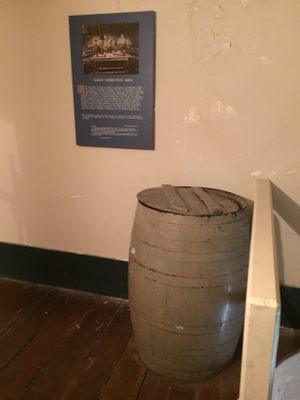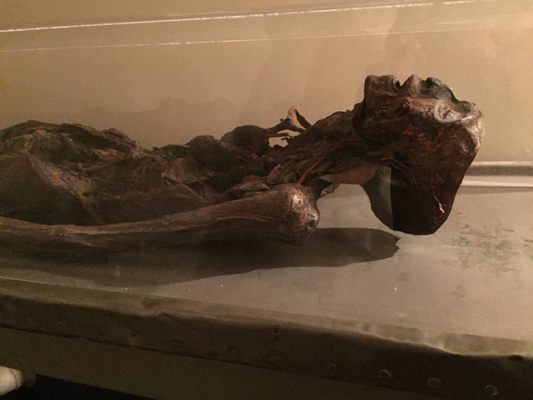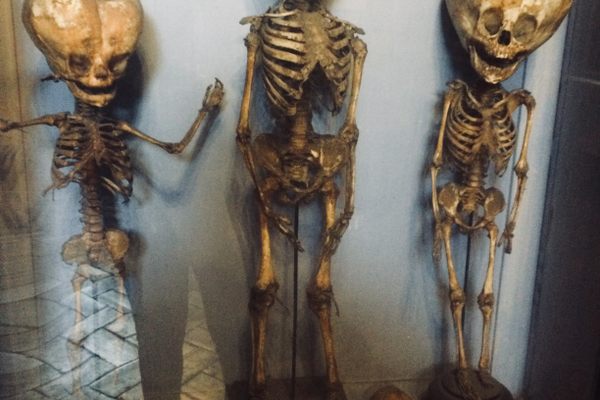About
The oldest medical education facility in the United States still in use, the University of Maryland's early-19th-century anatomical theater has a complicated history with cadavers.
Davidge Hall, as the College of Medicine of Maryland is commonly called, was Dr. John Beale Davidge’s second facility for teaching anatomy. The first, Anatomy Hall, was burned down by a mob who had found out about the use of cadavers in the hall for the education of young doctors, something not yet socially accepted in 1807.
The rioters were disturbed by the “desecration” of dead bodies, and also worried about where those bodies came from, as bodysnatching was a serious concern at the time. The protests forced Davidge, who had been operating his own school in a building he himself paid for, to set up an official, legal college of medicine, approved by the state of Maryland. The state also had to approve the use of “unclaimed” bodies for lessons, though this happened much later, with increasing acceptance of the use of cadavers for medical education.
Construction of a new anatomical theater was finished in 1813, and it eventually became part of the University of Maryland. The red brick building holds two amphitheaters, one on each floor. The second-floor amphitheater, which has a large skylight in the center of the dome and 12 smaller skylights around the edge, is no longer used for safety reasons because there is only one exit.
Before Maryland officially approved the use of bodies for dissection, body snatching remained a problem. There was a particularly talented body snatcher, a janitor named Frank, employed at the college. Frank would follow funeral processions so he always knew where the newest bodies were buried and could retrieve them. He was so efficient, one professor of surgery at the college made a business of providing the bodies Frank procured to other medical colleges in need. They were shipped in barrels, one of which can still be seen on display in Davidge Hall.
The building was officially named after Davidge in 1958 and, in addition to the barrel, boasts an impressive collection of medical artifacts and instruments, including a mummified human body named Hermie.
Related Tags
Community Contributors
Added By
Published
March 14, 2017
Sources
- https://en.wikipedia.org/wiki/College_of_Medicine_of_Maryland
- http://www.baltimorefishbowl.com/stories/pigtown-design-touring-the-oldest-medical-school-building-currently-in-use/
- http://www.medicalalumni.org/davidge-hall/
- http://www.umaryland.edu/ehs/programs/fire-safety/campus-building-information/davidge-hall/
- http://explore.baltimoreheritage.org/items/show/124#.WMarAxjMzqQ
- http://explore.baltimoreheritage.org/items/show/124#.WMarAxjMzqQ
- http://furiousbean.blogspot.com/2010/02/davidge-hall.html
- http://www.dailykos.com/story/2015/4/30/1381399/-The-history-of-Riots-in-Baltimore
- https://books.google.com/books?id=IJPwpgQYwzEC&pg=PA46&lpg=PA46&dq=cadaver+riot+baltimore&source=bl&ots=UbRgX_TeGO&sig=jQmEOLHgsmIbZe73urHNx97DAjw&hl=en&sa=X&ved=0ahUKEwjeyMnK4NPSAhUrxoMKHXNABmMQ6AEIPzAF#v=onepage&q=cadaver%20riot%20baltimore&f=false
- https://books.google.com/books?id=JmadPEPJkRsC&pg=PA106&lpg=PA106&dq=cadaver+riot+baltimore+1807&source=bl&ots=8QsgOwtRZr&sig=80VRmRTWOo8KwVVceAzgq0eUNWw&hl=en&sa=X&ved=0ahUKEwiP-ZSq4dPSAhVK74MKHd7zDSgQ6AEIODAE#v=onepage&q=cadaver%20riot%20baltimore%201807&f=false
- https://www.washingtonpost.com/archive/politics/2006/12/03/med-school-owes-its-existence-to-many-bodies-of-knowledge/2bfdf26b-0956-4007-9458-859f60642cc5/?utm_term=.cc9c2169e8ff
- https://www.washingtonpost.com/archive/politics/2006/12/03/med-school-owes-its-existence-to-many-bodies-of-knowledge/2bfdf26b-0956-4007-9458-859f60642cc5/?utm_term=.cc9c2169e8ff


























































